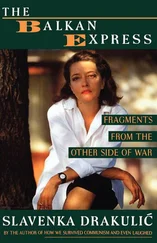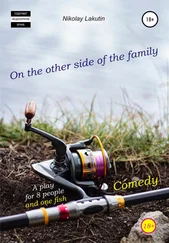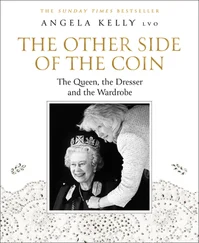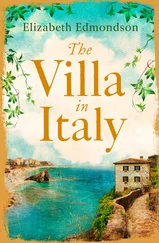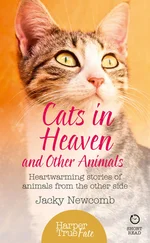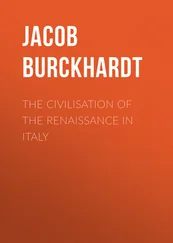Then, their “crucified frog” by the German artist Martin Kippenberger was glimpsed by a representative of the Roman Curia, who was pretty much bothered by the sight. As a result, Pope Benedict XVI personally spoke out against this scoffing green amphibian on the cross with an egg in one hand and a beer mug in the other. The Italian Minister of Culture Sandro Bondi called the frog “an unnecessary provocation”, while Franz Pahl, an official, went on a hunger strike as a sign of protest against the sculpture, and even ended up in hospital. Meanwhile, the artist Martin Kippenberger, who died in 1997, called his work Zuerst die Füsse (“Feet first”), and said it was a self-portrait of a person in a state of deep crisis.
Finally, the whole world heard the news about the installation Where Shall We Go Dancing Tonight? which the cleaners took for garbage. The work by the already mentioned Roman artists Eleonora Chiari and Sara Goldschmied was supposed to tell about the ideology of the consumer society, to ridicule the luxurious parties and scandals around the Italian politicians of the 1980s. Empty bottles scattered on the floor, cigarette butts, streamers, festive decorations, items of clothing and shoes – cleaners took all this for garbage from the celebration held the night before, sorted it into recycling bags and cleaned the room. Fortunately, the installation was recreated.
All of these stories took place at the Bolzano (Bozen) Museum of Modern and Contemporary Art. It has been blacklisted, and it seems that all the international press has written about scandals associated with its exhibitions. However, even at the most difficult times, here, at the Museion, the staff have fought with word and action for the right of the art to be free, and all the unpleasant “incidents” were perceived philosophically, as a basis for discussing contemporary art.
Unfortunately, the construction of the Museum of Modern and Contemporary Art in Bolzano (Bozen) did not bring the so-called “Bilbao effect” to the region. Even now, artists from London or New York, who are invited from time to time to take part in the Museion exhibition programs, first have to figure out its exact geographical position. Nevertheless, the architectural design of the Museum of Modern and Contemporary Art, created by the Berlin architects KSV Krüger Schuberth Vandreike, is very interesting in itself. The 25-metre-high parallelepiped is located on the border between the “old” and the “new” Bolzano, with one of its glass facades reflecting the life of the historical part of the city and another one – the rapid flow of the Talfer river and the modern city across the river. At sunset, these glass facades become an “exhibition tool” of multimedia art. Inside the multi-layered facades of the museum there are opaque glass panels, which during the daytime are used to control the lighting inside the Museion. Thus, in the afternoon, when the panels are “open”, you can see everything that happens in the building from the outside. Who knows, whether the representative of the Curia, going on his way past the museum, would have seen Kippenberger’s “crucified frog”, if the sculpture, hanging in the hall above the cashier’s desk, had not been visible from outside through the transparent walls?
The Museion was created not as a “container” with works of art, but as an international research laboratory in the field of contemporary art. In addition to the exhibition halls, the museum has venues for events and seminars, a library, a cafe, a shop and, moreover, a multipurpose indoor space on the ground floor, open to everybody. The latter was created by a guest designer from Merano (Meran), Martino Gamper, who has been living in London for many years. The Museion Passage was made free-to-enter for all kinds of events, both related and non-related to the work of the museum.
The wonderful initiative of the Museum of Modern and Contemporary Art in Bolzano (Bozen) – opening its covered passage with designer furniture for free public use – almost turned into another scandal. Migrants began to gather there. They charged their phones in the museum, used its restrooms and its high-speed free internet. Migrants filled the stone benches in front of the museum – the Wi-Fi signal was fine in the street. Soon the benches got decorated with inscriptions “Bolzano ai Bolzanini!!” (“Bolzano is for the residents of Bolzano”) and “Integrazione = Degrado!!” (“Integration equals degradation”).
Well, we forget that people never run from their countries, homes and families, if everything is all right. Tomorrow, you can find yourself in their place: run away from bombs, hunger, poverty, an unfair political regime; carry your children in the arms mile after mile, not knowing what awaits them ahead; try to cross a sea, realizing that the chances of drowning and of reaching the coast are about equal; risk your life and the lives of your families for the sake of hope for the future. Put yourself in the shoes of these people. What do you know about them?
The reaction of the Museion’s administration was not immediate, but nevertheless the only correct one: they gave the migrants the opportunity to speak about themselves. The project was called “Where do you imagine yourself?” Within its framework, meetings were held, at which the migrants were told about the place in front of which they would spend hours on benches, separated from it, however, by an invisible barrier. The experimental project of the Museum of Modern and Contemporary Art in Bolzano helped these people to take the first steps to adaptation and became an opportunity to learn about their stories and life situations. And that was only the beginning. A few months later, migrants, young people from South Tyrol and other European regions were already working together on an art project at Museion. The barriers had been finally brought down. The migrants got an opportunity to become a part of the community, while the community got a chance to feel closer to the migrants.
This art project, like many others, was created through common efforts in the studio – the building located next to the Museum of Modern and Contemporary Art. The house-studio was designed, along with the Museion and two bridges – for pedestrians and cyclists, by the Berlin KSV architects, as part of a single museum complex. The interior space of the building was occupied by the South Tyrolean designer Harry Thaler, whom the press usually calls “a London designer of South Tyrolean origin”. Interestingly, during his studies in the capital of Great Britain, Thaler, before setting up his own firm, worked at the office of Martino Gamper, the designer of the Museion Passage. The house-studio was designed as a temporary housing and a workshop for guest artists and curators invited to the Museion in Bolzano (Bozen).
The museum complex continues with two bridges spanning the Talfer river. Though made from the same materials as the museum itself, they were designed curvilinear in contrast to its strict forms. The bridges connect the historical centre of the city with the “new” Bolzano (Bozen), and you will have to cross them in order to look at the last part of the museum complex, located in the modern Don Bosco district.
There used to be a huge garden where Don Bosco district is now, but in 1940, under the Fascist regime, workers who came from various places in Italy to work in the nearby industrial area of Bolzano (Bozen) began to settle here. This project was part of the plan for the Italianization of South Tyrol – the result of the agreement between Hitler and Mussolini concerning the region. The period from 1943 through 1945 was for Don Bosco the time of Nazi occupation. A transit camp was established here, in which the Jews and the partisans of South Tyrol and other occupied territories were usually held before deportation to concentration camps in Germany. Today, you can follow the history of Don Bosco by looking at the few monuments of the past still found on its territory: remnants of the camp wall, sculptures dedicated to the victims of the inhuman regime, and one of the houses for Italian workers, now turned into a museum ( casa semirurale , “a semi-rural house”).
Читать дальше

